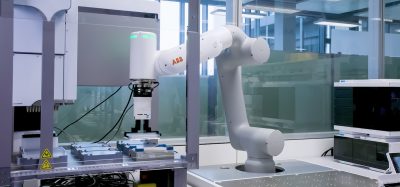Under the microscope: Choosing the best microplate reader
Posted: 19 March 2018 | Mark Wigglesworth (Director High-Throughput Screening - AstraZeneca) | No comments yet
Efficient microplate readers play an important role in effective hit molecule discovery. Mark Wigglesworth, of AstraZeneca, explains what he looks for in this technology.
In which way is drug discovery changing and how does it affect you and your future planning?
At a high level it appears to be changing for the better with the registration of more than 40 new molecular entities in three of the past four years. The industry doesn’t see the return it once did from a small number of blockbuster drugs. This suggests that the industry is successfully refocusing on smaller markets and opportunities to deliver beneficial medicines to smaller patient populations.
This has driven us to look very carefully at projects to make the right decisions on which ones are progressed, on more efficient ways of discovering new medicines and on high-quality projects. With the transition of AstraZeneca’s UK research facility to a new site in Cambridge, we have been able to look carefully at our practices and invest in the best technologies available.
In recent times you have analysed and questioned the impact, use and productivity of your screening facility. What role do microplate readers play in this?
We have looked at the historic impact of technologies on our ability to discover hit series. The conclusion we came to is that technologies rarely make a difference in the outcome of finding a hit molecule. This is largely due to scientists being clever people who often find a way of combining technologies to find the real molecules.
New technologies do of course have a value and where we have seen this most is where they become enabling, allowing an assay to be developed that simply could not have been run historically, or where they significantly speed up assay development and subsequent removal of non-specific compounds. While new technologies are required for a subset of our portfolio, the lion’s share of our hit identification is done with microplate readers hence improvements in this field have a significant impact on our work.
What microplate reader requirements are needed to keep up with your screening necessities?
There are a few really important requirements: sensitivity, speed, reliability and ease of integration on various platforms.
When working with difficult targets or experimental assays, the reader sensitivity can mean that an assay is enabled. We have seen examples where the previous reader generations would not have generated acceptable assays but the new ones do. Hence, the plate reader contributes considerably; high sensitivity coupled with low noise, low inter/intra well variability all contribute to good assay Z’ and improved quality.
For us it is also critical to move quickly, to be able to read a 1536-well plate in <1min increases throughput and reduces timelines without compromising quality.
The equipment also needs to be reliable and easily used. The ability to miniaturise assays is essential to manage our internal costs and to drive positive collaborations. Plate readers are often moved around different automation platforms dependent on the needs of the screen, and so need to be easily integrated. Simple user interfaces minimise training and improve user experience.
You acted as a beta-tester for BMG LABTECH’s PHERAstar FSX, what criteria did you use in your evaluation?
Neil Bennett led a cross discipline evaluation across our screening and assay development requirements to run a comprehensive analysis of the reader alongside other Mark Wigglesworth, Director High-Throughput Screening, AstraZeneca available readers. The main criterion was to equal or better existing equipment for assay quality whilst maintaining throughput. A week-long evaluation was run where HTS plates were read as usual for ongoing projects and then run on the readers being evaluated. Real data were analysed and directly compared for quality, potency, ranking, patterns and cross-talk at both single shot and concentration response across multiple assay technologies. Different read speeds were used to understand throughput and to determine where the new readers exceeded or failed over the current ones. Another important consideration was the ease of use, especially the software.
AstraZeneca in its history has used almost every different microplate reader from each vendor. So, we have a broad range of experiences to draw from and set a high bar on what we needed from the next generation of readers. In our trials, we found that the improvements in the new PHERAstar FSX outperformed our historic experiences and the other readers in our trial. The reader has fitted well into our assay development and screening groups, where it has been used frequently for a variety of technologies.
Related topics
Drug Discovery, Drug Discovery Processes, High-Throughput Screening (HTS), Microplate Readers, Personalised Medicine, Precision Medicine, Screening, Technology
Related organisations
BMG Labtech GmbH
Related people
Mark Wigglesworth, Neil Bennett








